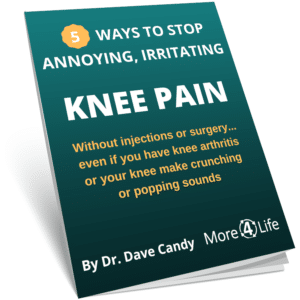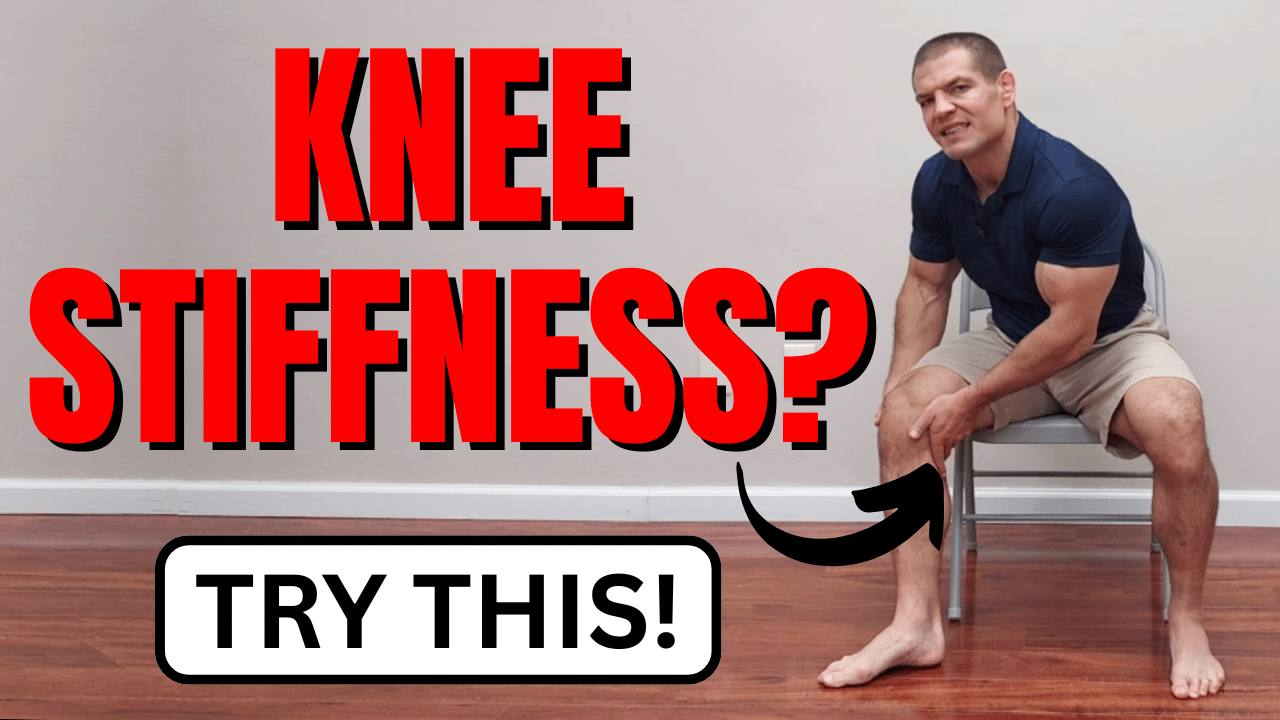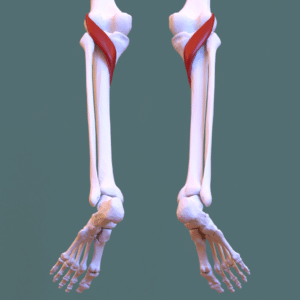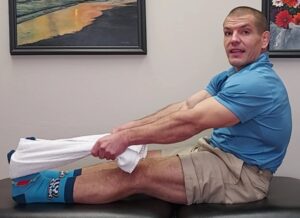If the back of your knee feel stiff after sitting for prolonged periods, you're not alone.
Many people over 60 feel knee stiffness when they stand up after sitting. Fortunately, there's a solution!
Watch the video to learn what causes back of knee stiffness after sitting, plus simple exercises to relieve it.
Table of Contents
- What It Means When the Back of Your Knee Feels Stiff After Sitting
- Why It Happens
- Quick Relief Plan
- Self-Release: Inner Calf (Gastrocnemius)
- Self-Release: Inner Hamstring
- Decompress and Release the Popliteus Area
- Towel Stretch for Calf, Hamstring, and Sciatic Nerve
- Tibia Rotation Drill to “Unlock” the Knee
- Key Tip When Standing Up
- Easy Calf Stretch Before Walking
- FAQ
- When to Be Careful

What It Means When the Back of Your Knee Feels Stiff After Sitting
It is that tight, stuck feeling when you first stand up. The back of the knee often feels stiff.
It may also happen after a deep squat. The first few steps can feel hard.
Why It Happens
When you sit with bent knees, tissues at the back of the knee go slack.
This includes the joint capsule, calf muscles, hamstrings, and a small muscle called the popliteus.
To bend, the knee slightly turns inward. To fully straighten, the shin must turn outward a little.
If inner calf, inner hamstring, or popliteus are tight, outward turn is limited. The back of the knee can feel stiff after sitting.
Quick Relief Plan
- Release the inner calf.
- Release the inner hamstring.
- Decompress the back of the knee with a towel.
- Stretch calf and hamstring with a towel strap.
- Do a light tibia rotation drill.
- Use a short calf stretch before walking.
Self-Release: Inner Calf (Gastrocnemius)
- Sit with the calf relaxed and off the floor. Cross your leg if helpful.
- Pinch the inner calf between your thumb and fingers. Strum across the muscle.
- Find tender knots. Hold gentle pressure for 90 seconds to 3 minutes.
- For “active release,” pin the spot and slowly pump the ankle up and down.
Self-Release: Inner Hamstring
- Feel along the back-inside of the thigh near the knee. Find a tight band.
- Pinch or press that spot gently. Hold 90 seconds to 3 minutes.
- For active release, keep pressure and slowly bend and straighten the knee.
Decompress and Release the Popliteus Area
- Place two fingers in the soft spot behind the knee. Hold gentle pressure.
- Or place a small rolled towel in the back of the knee. Gently bend and relax.
- This can move fluid out of the back capsule. It helps if swelling is present.
Towel Stretch for Calf and Hamstring
- Loop a towel around the ball of your foot. Sit tall and lean forward slightly.
- Keep the knee comfortably straight. You should feel a light stretch behind the knee.
- Hold 30–60 seconds. Repeat 2–3 times. Stay in a gentle range.
- For best angle, lightly turn the towel inward or outward until the stretch feels right.
- You can also do slow ankle pumps. This adds a light sciatic nerve glide.
Tibia Rotation Drill to “Unlock” the Knee
The popliteus turns the shin inward when you bend. To stretch it, guide the shin outward.
Sit with the knee bent. Gently rotate the lower leg outward. Then relax.
Do 10–15 slow reps. Keep it pain-free and controlled.
Key Tip When Standing Up
As you rise, keep knees slightly turned out to stay strong.
At the top, allow a small inward turn of the thigh. This helps the shin turn outward and the knee “locks” fully.
Try this before your first steps if the back of your knee feels stiff after sitting.
Easy Calf Stretch Before Walking
- Step one foot back. Keep the heel down.
- Lean forward until you feel a calf stretch.
- Hold 20–30 seconds. Repeat 2–3 times per side.
FAQ
How long until the back of my knee feels better after sitting?
Many people feel easier motion in minutes. Consistency brings longer-lasting change.
Should I do these every day?
Yes. Try one to two times daily at first. Then adjust as symptoms ease.
What if I feel numbness or sharp pain?
Stop and ease the pressure. If it persists, consult a healthcare professional.
When to Be Careful
- Recent injury or surgery to the knee.
- Severe swelling, locking, or giving way.
- Unexplained redness, heat, or fever.
If any of these apply, get checked before trying new exercises.
Need More Help For Knee Pain?
If you live in the St. Louis area and need help for knee pain, we'd be happy to help you here at More 4 Life.
Just tap the button below to request an appointment.







